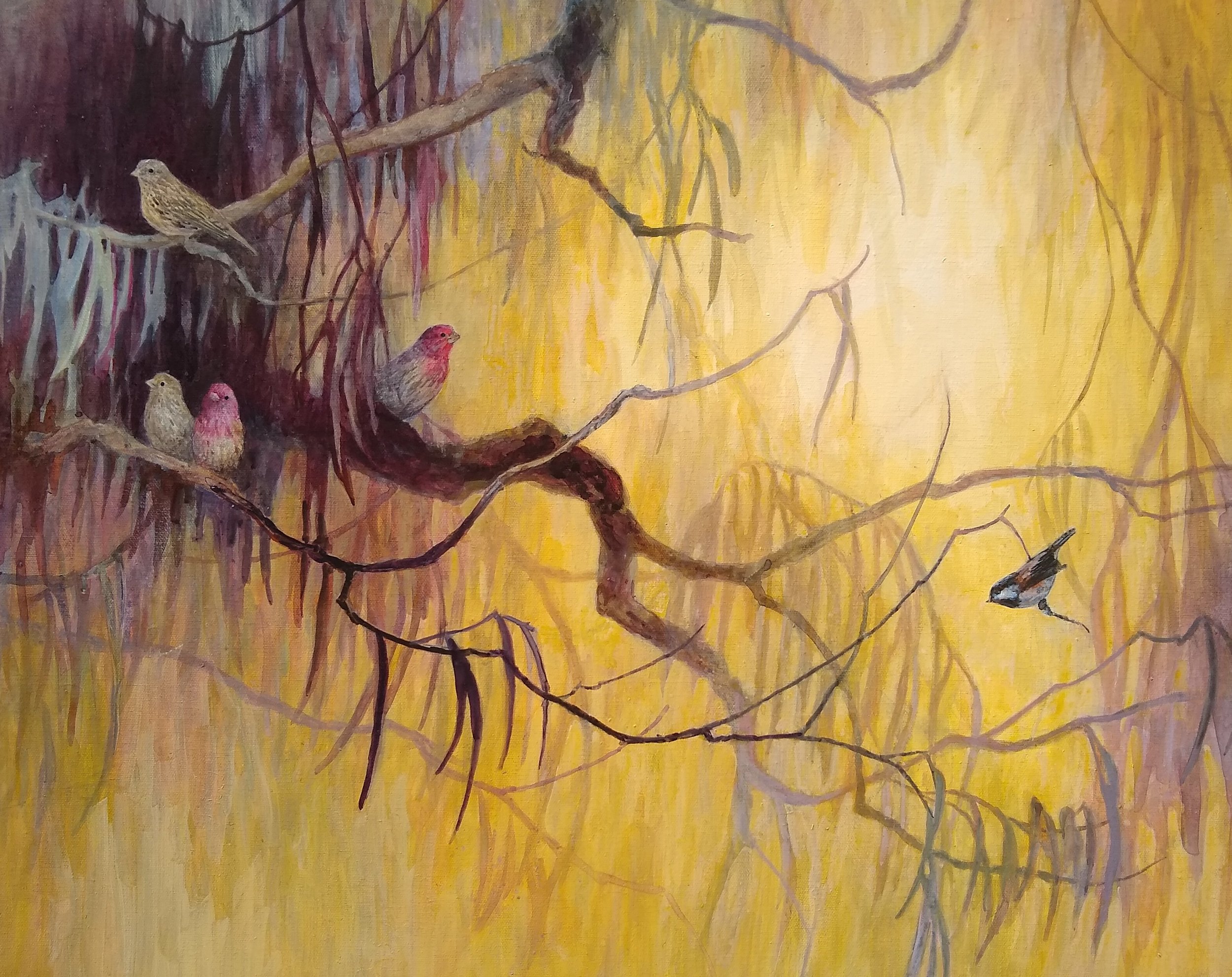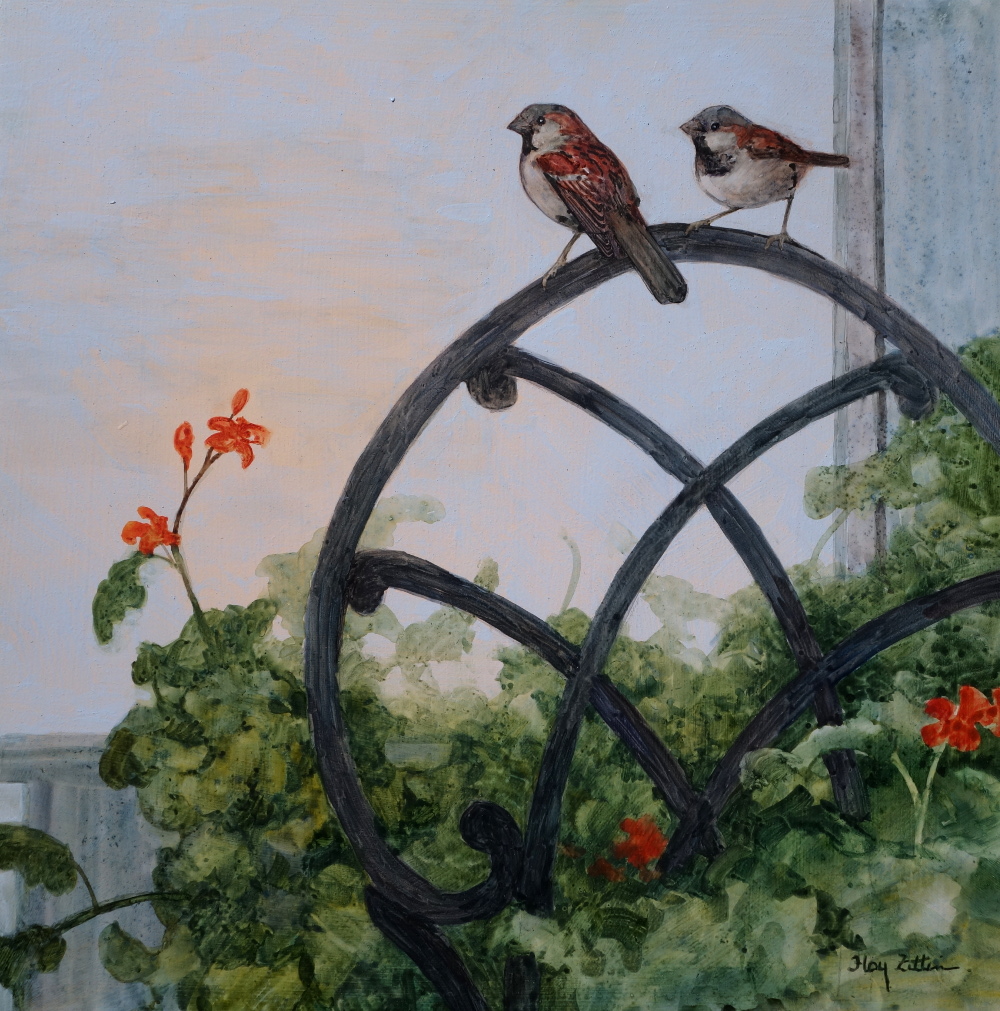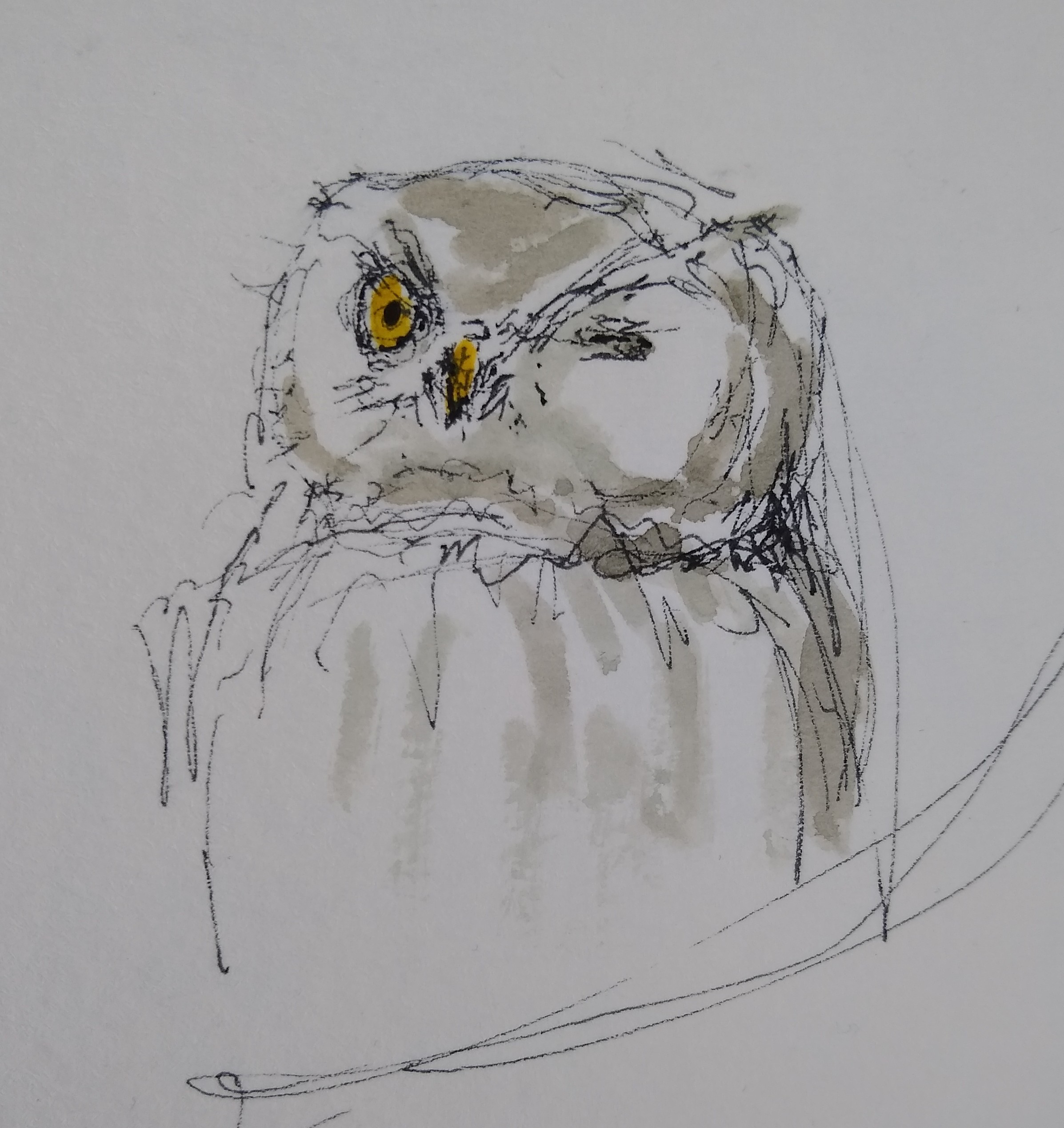It was such fun to come across a group of Pygmy Nuthatches on our trip to the Sierras last June. These tiny birds make me smile and needed to be part of a painting.
Pygmy Nuthatches 10” x 20” acrylic on wood panel
This blog is devoted to showing photographs and paintings of birds, and it is our hope that these images create interest in the enjoyment and the conservation of this diverse group of animals. Your comments are appreciated. If you like a photo or painting, please give it a heart. This helps us understand what our viewers want to see more of.
It was such fun to come across a group of Pygmy Nuthatches on our trip to the Sierras last June. These tiny birds make me smile and needed to be part of a painting.

Pygmy Nuthatches 10” x 20” acrylic on wood panel
This is a paintings I’m just finishing up. House finches are common in our area and they are fun to work with in paintings. In this piece I played with them among eucalyptus leaves which also have reddish accents.

‘House Finches and Chickadee’ 22” x 28” acrylic
The plaintive song of the Canyon Wren reverberates in canyons of the Western United States. They are not too shy so they make reasonable photo subjects. They are uncommon in Santa Clara County, California. Last I heard there are two known Canyon Wrens in the county. A beautiful wren with a white throat and rusty-red uppers.
I don’t have many paintings of this bird and had to go back a few years to find this one. These are not my favorite bird, but it is fun to watch them in the restaurant eating area behind my gallery in Los Altos.

House Sparrows and Chair 12” x 12” watercolor

This small bird is very difficult to see. In breeding season it can be heard, but barely. The pitch of its song is very high and has an insect-like buzz to it. If it’s a windy day, they are difficult to hear.
I don’t have any exotic birds to follow Dave’s post but here is a painting of a common bird I recently completed. Snowy Egrets are a great subject to work with and I had fun placing this one amid tangled splashy branches.

Snowy Egret 16” x 20” acrylic on wood panel
The Green Turaco - Tauraco persa
Well, so far, all my photos were taken in the wild. I will try to adhere to this concept, but I had to post this one because it is such an unusual looking bird. It is found in Central-Western Africa. Technically it is the species Tauraco persa buffoni, the only subspecies that does not have a thin white line below the eye.
This photo was taken at the Bloedel Conservatory, Vancouver, BC.
We can count on finding these on our yearly winter trip to the Merced National Wildlife Refuge, but this last winter we came across two together and the scene suggested this painting.

16” x 16” acrylic on canvas
Northern Pygmy-Owl with vole
Northern Pygmy-Owl with head turned showing fake “eyes” on back of head.
A fellow birder and I were walking in the Santa Cruz Mountains of Central California. We had froze in a field surrounded by scrubby willow to get a view of a Wilson’s Warbler. Out of nowhere, this bird lands next to us, probably within about 6 feet. It could barely fly. I estimated that the vole was about 2/3 of the owl’s weight. It stared at us while we took photos. We backed off and it dropped the vole. We kept going in hopes that it retrieved its prey.
This is another painting inspired by a Bewick’s Wren.

‘Bewick’s Wren’ 16 x 16 watercolor on wood panel
Bewick’s Wren’s reside in our year round and I wonder how they feel when the orioles show up in the spring.

‘Spring Visitor to a Wren’s World’ 24” x 18” watercolor
This small wren of the eastern parts of the United States and eastern parts of Mexico is very noisy for its size. Its loud “tea-kettle tea-kettle” song lights up forests during the breeding season. They are hard to see because they favor brush thickets, but hearing them is not a problem when they are singing.
Photographed at El Franco Lee Park, Houston, Texas.
This is the third year in a row we have found Green-tailed Towhees among the flowering manzanita shrubs in the Sierras. I love the various greens and the way the orange cap of the towhee mirrors the orange in the manzanita branches.

Towhee and manzanita sketch 2019
A strange looking bird indeed. In the summer this species is common in the Sierra Nevada Mountain Range of California. It prefers relatively dry shrubby mountain slopes. Early in the breeding season they can be located by their unique song.
Some warblers enjoy the heights. These are two we found a couple weeks ago in the mountains in SE Arizona.

Warbler sketch May, 2019
Last fall, this neighborhood raptor took to hanging out in the pomegranate tree, where he could easily keep track of birds at the feeders.

Cooper’s Hawk and Pomegranates 24” x 12” acrylic
This hawk is a sleek, rapid-flying bird that negotiates tree limbs at high speed when chasing its prey. One of its favorite prey is the Mourning Dove. Our backyard feeders attract Mourning Doves, so this means that this raptor is on the prowl.
When the backyard birds spot this raptor, they are gone in the blink of an eye. One second there are 2-3 dozen birds on the ground and at the feeders and an eye blink later there are zero birds. When this happens, I know this species is nearby.

May 2019 Cave Creek Road

May 2019 Cave Creek Road
A friend showed us where to find this bird close to the road and out in the open. She was asleep but opened one eye to check us out.
The Whiskered Screech Owl is found over a small area of the Southwest United States. Its distribution extends down the western mountains of Mexico and into part of Central America. We heard several “tooting” during the night where we were staying in Portal, Arizona. Sometimes their toots sound like Morse code.

May 14 - Box Canyon Arizona
These were not shy and even came out and posed for us. I loved that there were a pair foraging together, and I was also taken by the beautiful coloration, with a gray head grading into a brown body.